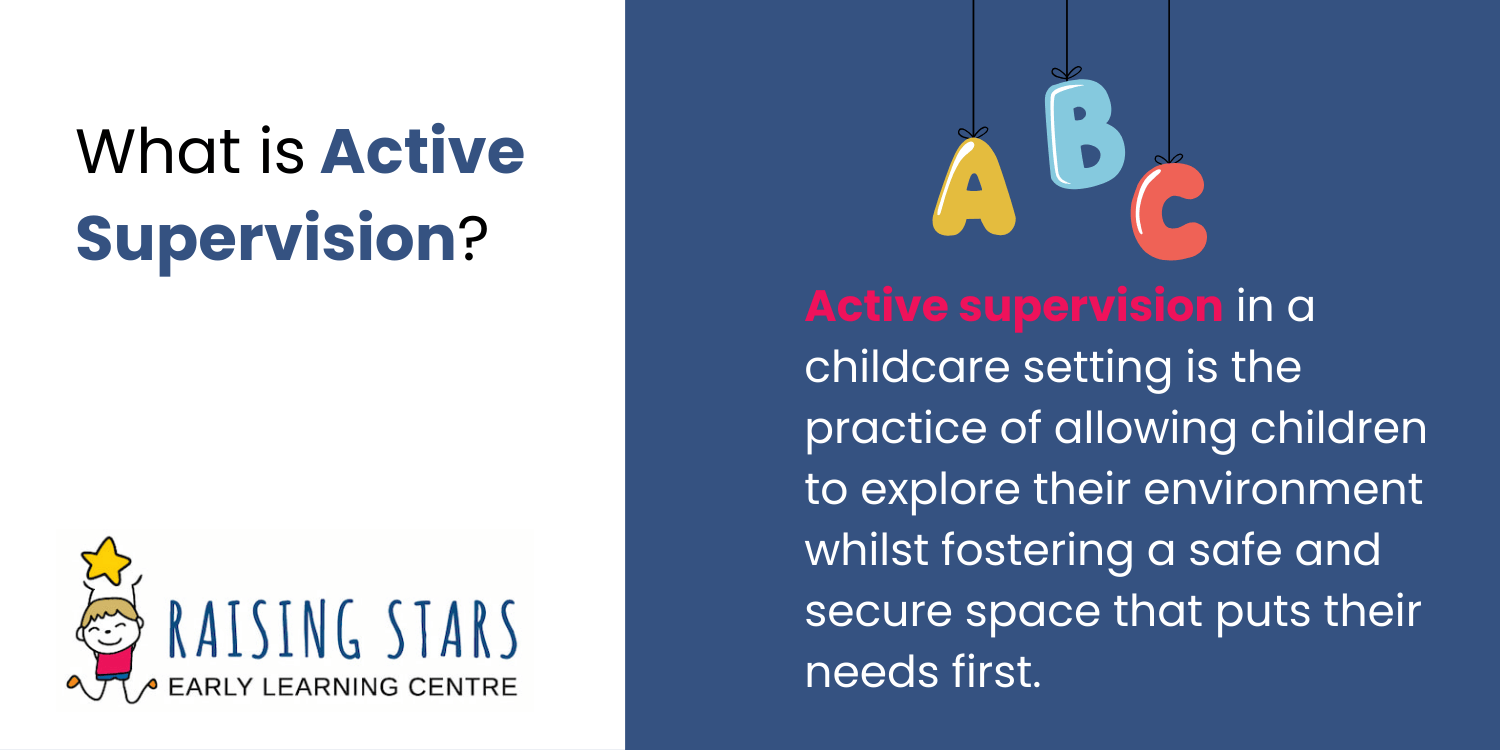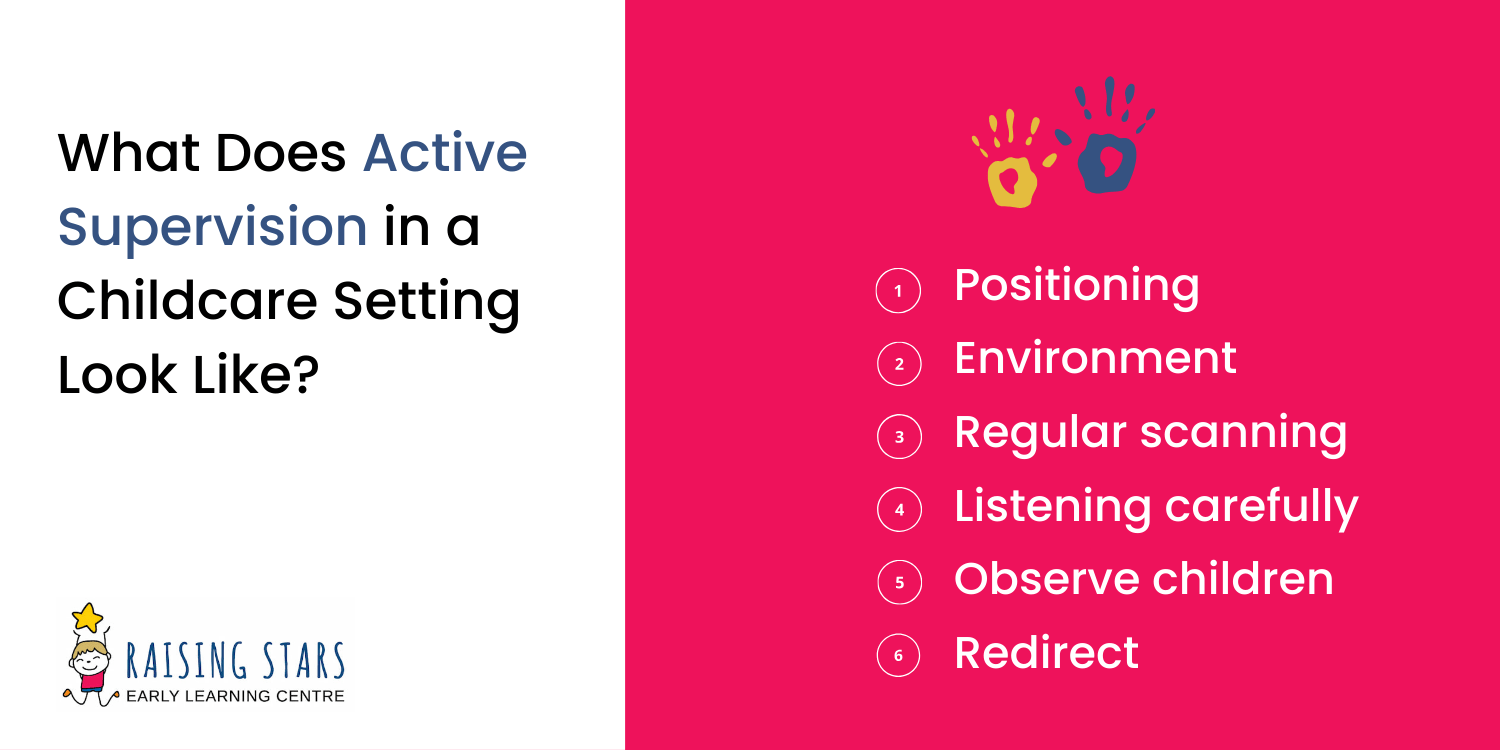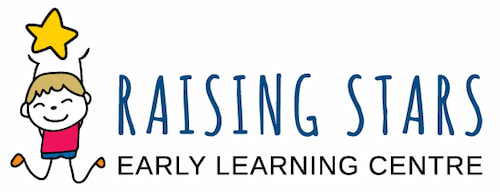A safe environment is essential for children to excel in both learning and life. Educators who engage in active supervision in childcare settings create a secure space to meet the needs of all children, while ensuring protection from hazards, accidents, or injury.
At Raising Stars Early Learning Centre we understand and practice active supervision every day to ensure the safety of students.
What is active supervision?
Active supervision promotes a safe and positive environment for young children. Our educators use active supervision to ensure the safety of the children but also to identify the children who may need extra help, whether in learning, playing, or other activities.
Educators who use the active supervision strategy allow children to explore their environments safely. We do this by positioning ourselves to observe the children, understand each child’s learning and behaviour patterns, ensuring all students are accounted for, listening out for any problems, and getting involved when necessary.
Our educators aim to stay focused, alert, and engaged with every child in the childcare centre to prevent accidents and injuries. By understanding and practicing active supervision, we foster a secure environment that puts the safety of children first.

Active supervision in childcare settings
Positioning
Through active supervision, educators can ensure the safety of children by always being physically and visibly available. During lunchtime, before and after lessons, excursions, and playtime, childcare centres carefully plan rosters to ensure an educator is around and active. Educators are also positioned to monitor the children effectively. At lunchtime, for example, one staff member may be near the bathrooms and another staff member can position themselves near the play equipment.
Environment
Setting up a safe learning environment for children promotes active supervision. A safe learning environment includes moving furniture, toys, and other objects to ensure a clear line of sight and removing clutter from the area. Children should always be in an educator’s line of vision, so making sure all tables and other furniture are waist height or below and eliminating any hidden corners in the room is crucial.
Regular scanning
Regularly observing the classrooms or playground to account for all children. Constant scanning will help identify appropriate positions to be in as educators, as well as ensure children are safe. To actively supervise, educators avoid standing with their backs to children, undertaking distracting tasks, and staying stagnant in one spot.
Listening carefully
Educators use more than sight to actively supervise – using the sense of sound is also part of active supervision. By listening carefully, educators can notice tone or volume changes, absence of sounds, or sounds that may be a cause for concern, such as crying, choking, or gasping. Changes in tone or volume can signal an outburst, fight, or tantrum, which educators can avoid by noticing and intervening to defuse the situation. Absence of sound or sounds that may be a cause for concern puts the educator on high alert and can investigate to ensure children are safe.
Observe children
Educators can actively supervise by observing the child and anticipating behaviour – to do this, however, educators must understand each child’s abilities, culture, ideas, and interests. Getting to know each student will not only make the child feel comfortable coming to the educator if they have a problem, but also allow the educator to anticipate the child’s next steps in any given situation and take steps to ensure their safety. As educators, we can also teach this awareness to the children, helping them to identify dangers and understand how to minimise risks.
Redirect
If an educator notices a child is unsafe, whether from observing, listening, scanning, or positioning, they can intervene and redirect the child’s behaviour. Redirecting can be done by encouraging the child to solve a problem on their own, helping them develop solutions, and offering verbal or physical cues, such as guiding them to another area or activity. Every child is different and may respond to alternative redirection – educators must understand each child’s needs and responses to redirect effectively.


